Root rots are one of the typical causes of killing a bonsai tree.
Common symptoms of root rot on bonsai are stunting, wilting, leaf color fading or changing to yellow/brown and branches dieback. It can be caused by pathogens or mistreatment by the grower. Bonsai trees may recover from root rot depending on the damage to the root system and the timing of intervention.
How to know if bonsai has root rot
Bonsai root rot symptoms
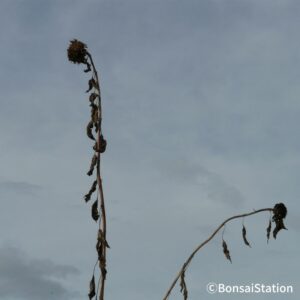
These are the common symptoms of root rot on bonsai.
- Bonsai tree stunted and growing very slow
- Bonsai tree wilting
- Bonsai tree easily rocked back and forth in the pot when pushed
- Gradual fading of leaf color
- Foliage tan or yellow/ light brown, and then crisp and dry
- Loss of lower leaves in deciduous bonsai trees
- Branches/tips dieback
Beware that these symptoms can easily be confused with general nutrient deficiencies where bonsai trees cannot uptake adequate amounts of water and nutrients to support the above-ground tissues.
What causes root rot on bonsai?
Root rot on bonsai trees can be caused either by (1) pathogens or (2) mistreatment by the bonsai growers.
Pathogens
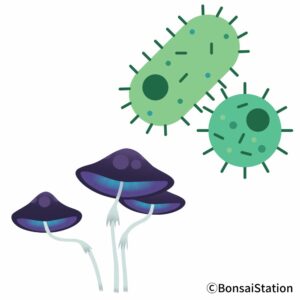
Some fungi cause root rots on bonsai trees. A large number of soil-borne fungi cause root rots but Phytophthora is one of the most common root rot fungi. Root rot fungi have wide host ranges and thus can cause root rots on a wide variety of bonsai trees.
Root rot fungi are soil-borne pathogens; movement of infested soil, plant material and contaminated irrigation water can spread the disease. The fungi can also be transmitted by insects when feeding on root tissue or other tree parts.
Some of the pathogens can survive in the soil in the form of oospores for up to 5 to 10 years. Using unsanitized soil or reusing soil can thus spread the disease/revive the disease after it is controlled.
Mistreatment
One of the major causes of root rot on bonsai trees is mistreatment by bonsai growers such as;
- waterlog
- drought
- fertilizer burn
- rootbound
- wrong placement
Watering problem

Watering problem, either giving bonsai trees too much water or not enough water, is one of the major causes of bonsai root rot by grower mistreatment.
Plant roots respirate. Roots need oxygen to burn carbohydrates for their energy to grow and repair. Giving too much water drowns roots in water by limiting the oxygen supply and preventing carbon dioxide from diffusing away, causing them to die off.
Giving not enough water can also cause roots to die because water stress can negatively change roots’ cell water permeability and limit their growth altogether. Azalea, flowering cherries and Japanese maples are among bonsai trees that are particularly intolerant to drought stress.
Fertilizer burn
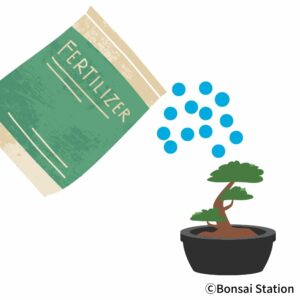
Fertilizer burns occur when the bonsai trees are given too much / too concentrated fertilizer, or the wrong type of fertilizer, causing damage to the trees.
Nutrients and water enter the trees through their root cell membranes via osmosis. Usually, water flows into the roots as the roots have a higher solute concentration than the surrounding soil.
If given too much/concentrated fertilizer, salts outside the root cells increase, causing water to leave the roots into the soil. The roots will turn brown to black and die.
Rootbound
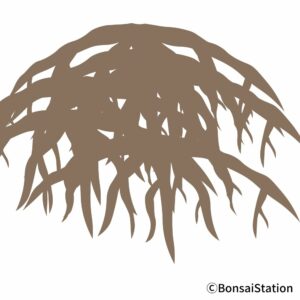
Rootbound can occur more often than you think because bonsai pots are small and shallow.
Roots grow vigorously when trees are young and healthy. When pots are filled with roots, water do not drain well as the roots cover the drainage holes. Roots cannot respirate enough as well because there is no space between soil particles to keep air. Roots may die gradually.
Bonsai trees should thus be repotted regularly; every 1-2 years for deciduous/ flower/fruit bonsai trees and 3-4 years for coniferous bonsai trees.
Wrong placement
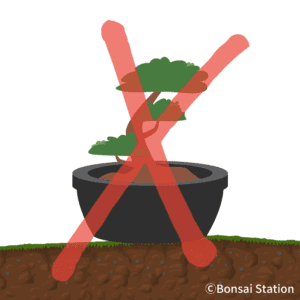
Except for a few indoor bonsai species like ficus, most of the bonsai species should be kept outside with plenty of sunlight and airflow. This will not only help the trees to grow healthy but also dry the soil with sun and wind so that the roots can access water as well as air.
How to treat root rot on bonsai
Can a bonsai recover from root rot?

Whether bonsai trees can recover from root rot depends on the damage to the root system and the timing of intervention. If there are some healthy white roots left, those roots can grow back and so as the trees.
Damaged roots are forever gone and will not revive so early treatment is always better. Evergreens tend to show above-ground symptoms long after the roots are severely damaged. So they may be hard to recover from root rots because when we realize something is wrong, it may be too late.
How to treat root rot on bonsai
Root rot caused by pathogens
If the root rot is caused by fungi, you can remove the infested area and repot or use fungicides like phosphate.
Fungicide treatments are most effective when applied preventatively, before the appearance of symptoms. Unfortunately, chemical control alone will not stop the disease. So, if you already have root rot on your bonsai trees, it is better to remove/repot and then use fungicides to prevent further spread.
Repot
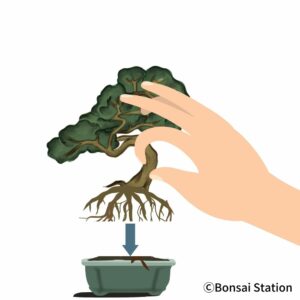
- Pull the tree out of the pot and inspect it thoroughly.
- Remove and discard all the infected areas.
- Remove old soil from roots completely. Repot in a brand-new or sanitized pot using new soil.
- Sanitize all equipment between uses.
When possible, maintain a soil pH below 5.5 to prevent the soil environment from being fungi-suitable. Also, minimize watering to decrease the likelihood of spores dispersing to other healthy trees.
Fungicide
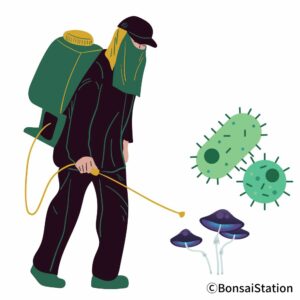
Apply the fungicide with the proper dosage at the recommended interval on the label. Remember that fungicide rarely eliminates the root rot fungi and additional treatments like repotting are needed.
Root rot caused by mistreatment
The followings are short-term treatments for the root rots on bonsai trees.
Treating waterlog
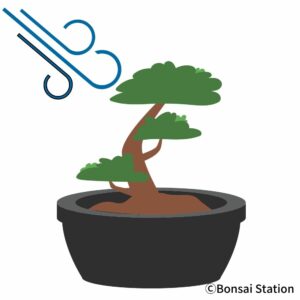
- Stop watering until the soil dries adequately.
- Move the pots under a sunny area with enough airflow. Keep enough space between the pots.
- If the excess water comes from continued rain, cover the pots to cut it.
- Make sure the drainage holes are not blocked.
- Remove the moss or ornamental rocks from the soil if there are any.
Treating fertilizer burn
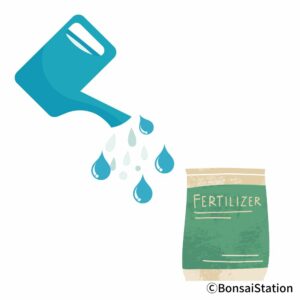
- If fertilizer is visible, remove it as much as possible.
- Flush with water heavily to rinse the soil for at least several minutes. Continue doing it for several days. Make sure that all water is running out of the drainage holes and that the trees are not waterlogged.
Treating rootbound
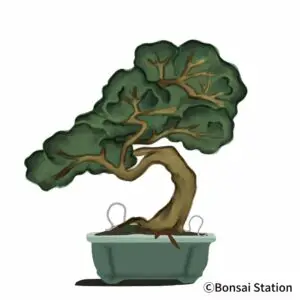
Secure the tree using wires/strings.
Treating rootbound is tricky because we cannot repot bonsai trees at any time of the year. In fact, repotting in the wrong season can kill the trees faster than the root rot.
The best time for repotting any bonsai species is early spring, just before new shoots come out. If the trees are young and healthy, they can be repotted during spring and fall but not in summer and winter. If you can, wait until the repotting season comes.
In the meantime, limit the watering frequency so that the roots are not waterlogged and get oxygen.
Long-term treatment
The long-term treatment is to care for your bonsai tree in the right way. I have several posts on this site that can help you to look after your bonsai sufficiently.
- To know how often to water your bonsai trees, this post (“How often to water bonsai tree“) will be helpful.
- To know what kind of soil is best for bonsai, this post (“How to make bonsai soil at home“) will be helpful.
- If you have mini bonsai trees, this post (“How to care for mini bonsai trees“) is a complete guide.



